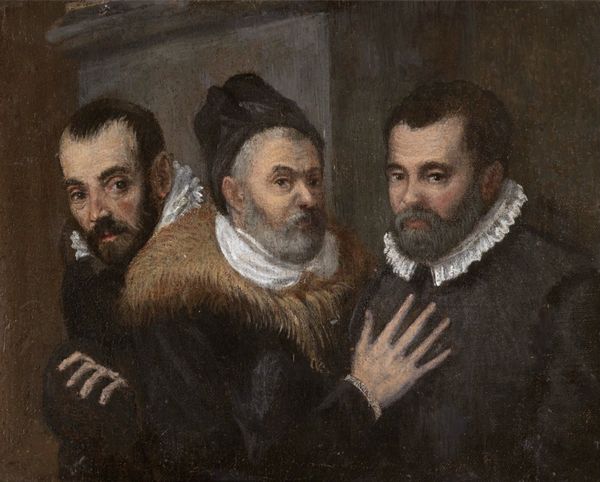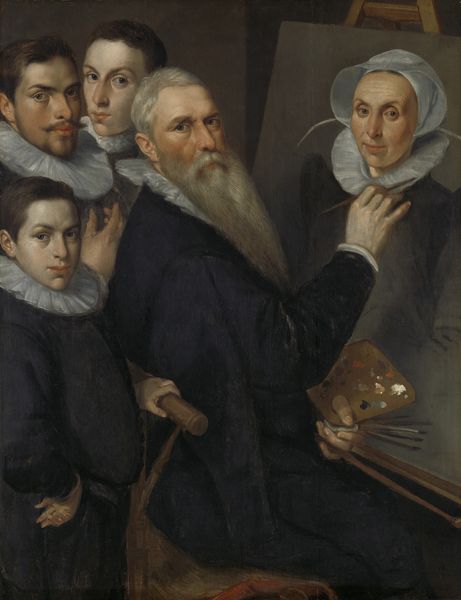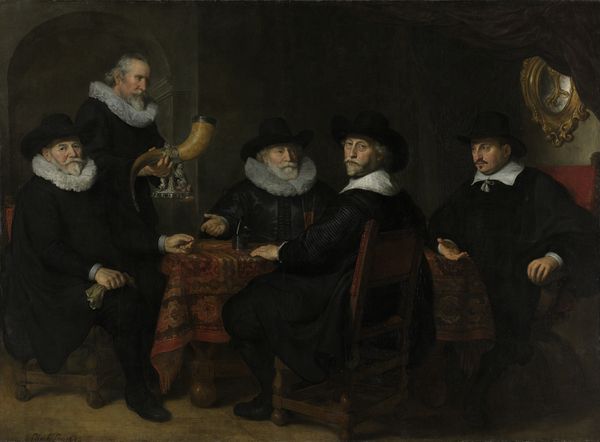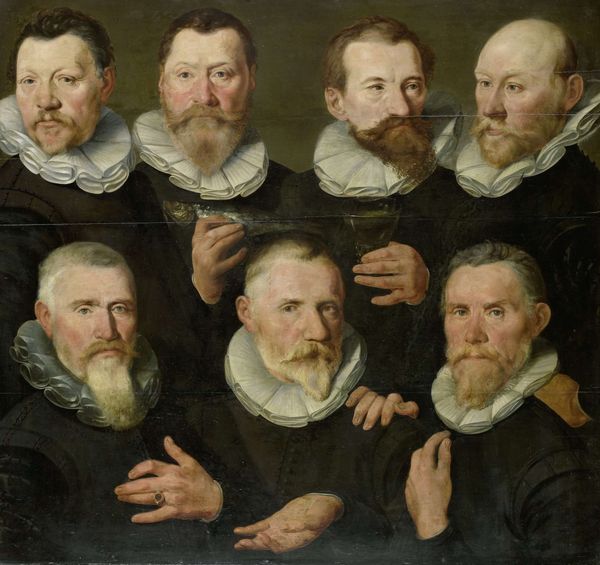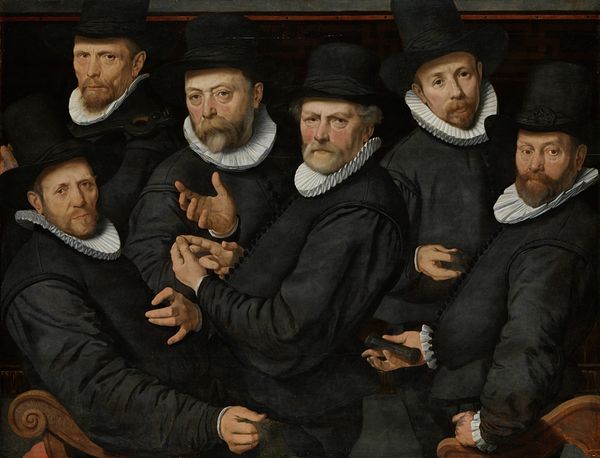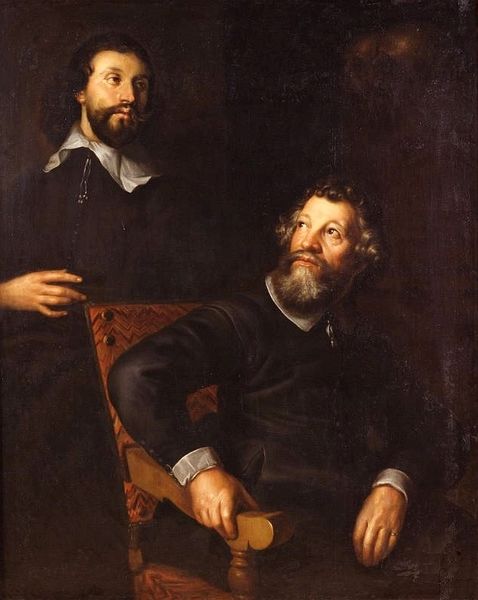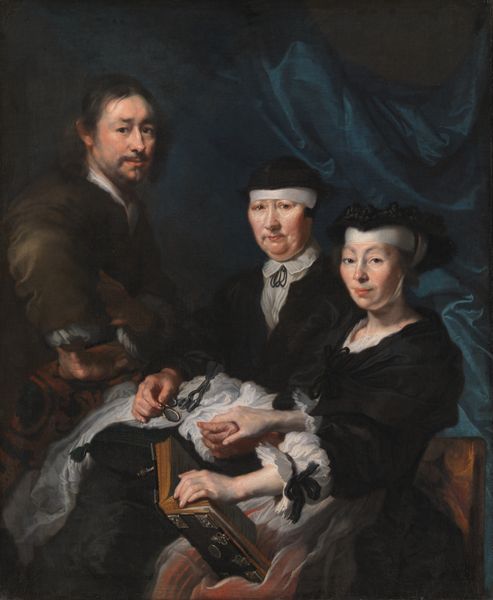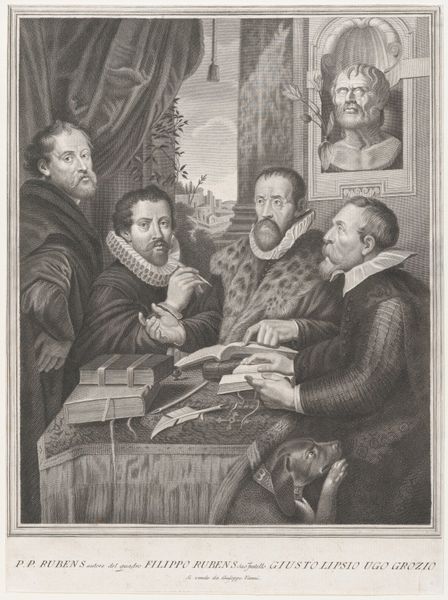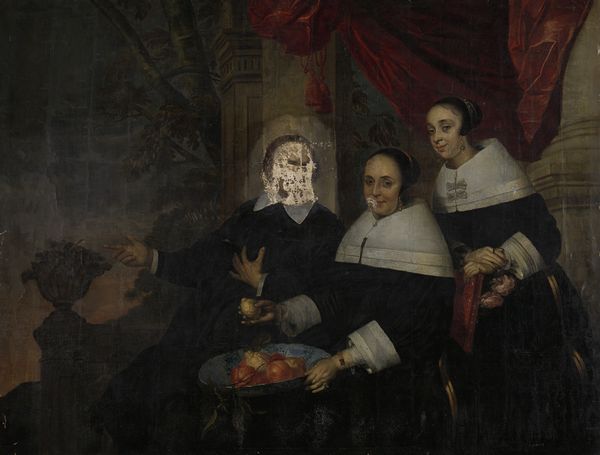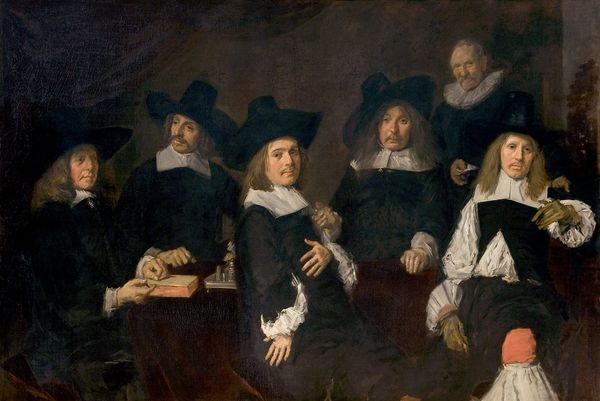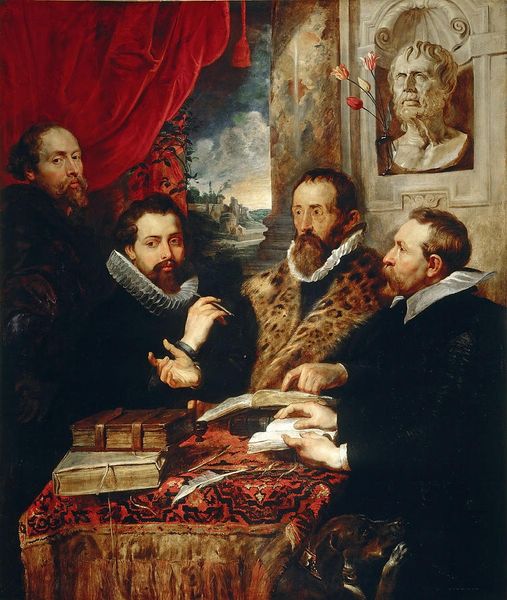
Group Portrait of an Unidentified Board of Governors c. 1625 - 1630
0:00
0:00
painting, oil-paint
#
portrait
#
baroque
#
dutch-golden-age
#
painting
#
oil-paint
#
group-portraits
#
genre-painting
Dimensions: support height 126 cm, support width 105.8 cm, frame height 149 cm, frame width 128.2 cm, sight size height 125 cm, sight size width 104.2 cm
Copyright: Rijks Museum: Open Domain
Curator: Stepping up close, one is immediately struck by the somberness of the tones and the direct gazes of the sitters. They certainly command attention. Editor: Indeed. Here, at the Rijksmuseum, we are presented with "Group Portrait of an Unidentified Board of Governors", an oil painting by Thomas de Keyser, created sometime between 1625 and 1630 during the Dutch Golden Age. What resonates, though, is the implicit power dynamics present. Curator: Precisely! These are not just any men. The stark black attire, relieved only by the white ruffs, speaks of status and authority. We should consider the racial implications of only representing affluent white males within this "board of governors." What ideologies were suppressed in only showing their likeness, their goals? Editor: A valuable point. The context of the Dutch Golden Age is critical. We’re looking at a society undergoing massive economic expansion, fueled in part by colonialism and mercantile ventures. Group portraits like this were commissioned by governing bodies, guilds, and charitable organizations. This work acts almost as a document legitimizing their power. Curator: That document also silences dissent. Think about the gendered aspect: women were, obviously, excluded from participating on these boards. De Keyser’s rendering is quite remarkable from the artistic perspective. Editor: And a technically proficient display it is: look at the detailed treatment of the faces. The subtle play of light and shadow to give character to the forms. Then you consider the restrained palette—dark blacks against neutral background that gives the composition a controlled sense. Curator: Indeed. We also must appreciate De Keyser's capacity to portray not just external likenesses, but inner bearing as well. It’s as if each of these men carries a different type of gravitas, rooted in varied forms of power and wealth acquired by exploitive, colonial practices. Editor: Reflecting on this work, I’m reminded of the ways in which art actively participates in the construction of the public sphere during that period. The work stands both as artifact and artifice. Curator: I completely agree, and it reinforces the necessity of critically examining artworks from our shared—and divided—past in light of current concerns over identity, representation, and equality. It's through this continued examination that we can, maybe, move toward true understanding.
Comments
rijksmuseum about 2 years ago
⋮
The governors of associations, institutions, and businesses took pride in having themselves portrayed as a group. These three unidentified gentlemen are clearly involved with money and precious objects. On the table before them are a pouch with coins and a beautiful ornate scale for weighing gold and other valuables. The man at the right holds a letter of credit. They may well be bankers.
Join the conversation
Join millions of artists and users on Artera today and experience the ultimate creative platform.

